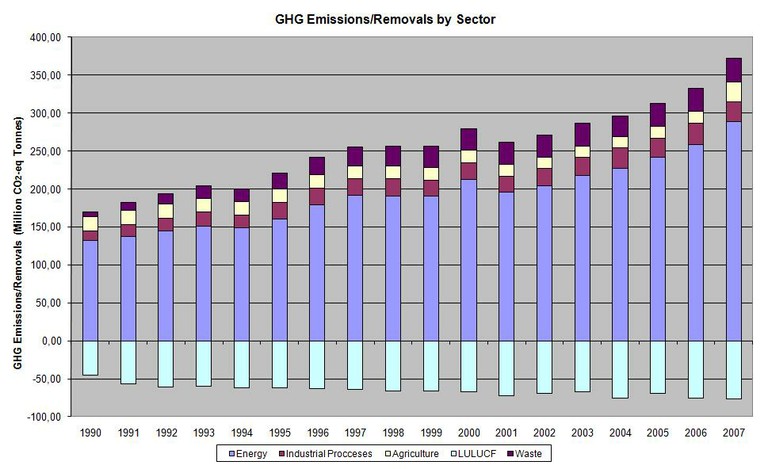Published: 26 Nov 2010
Modified: 17 Feb 2025
According to IPCC Fourth Assessment Report future climate change could critically undermine efforts for sustainable development throughout the world and especially in the Mediterranean Basin. Turkey is located in the Eastern Mediterranean basin where countries are in the highest risk group.
Climate change had an additional impact on our existing problems of desertification and water scarcity. Turkey has exceptionally rich wetlands and biological diversity which are highly vulnerable to climate change.
Summer temperatures (mean and maximum) over the past five decades have increased in the western provinces, while winter temperatures have shown a decrease mainly along the coast.
Water stress is already apparent in many parts of Turkey, and is exacerbated by sharply rising demand in many sectors, particularly agriculture. Central Turkey, in particular, is at present facing a catastrophic drought following the hottest summer (2007) in living memory. The capital Ankara is presently experiencing water shortages, and water restrictions have been put in place.
For example, the vast Konya Plain, which covers an area twice the size of Wales and stretches from below Ankara to the Mediterranean, was once known as Turkey’s wheat house After a virtually dry summer and impact of climate change over the past decade, dozens of lakes have dried up, with severe consequences for local communities and wildlife.
Due to the steady population growth and intensive industrialisation, the total GHG emissions of Turkey increased steadily in the period 1990 and 2007. In 2007, the main GHG in Turkey was carbon dioxide (CO2), accounting for 81.7 per cent of total GHG emissions expressed in CO2-eq, followed by methane - 14.6 per cent, and nitrous oxide N2O - 2.6 per cent. The energy sector accounted for 77.4 per cent of the total GHG emissions, followed by waste - 8.5 per cent, agriculture - 7.1 per cent, and industrial processes - 7.0 per cent. The emissions rose by 119,1% between the years 1990 and 2007, from 170.1 to 372.6 million tonnes. Figure 1 shows trends of sectoral GHG emissions for years 1990-2007

Figure 1 – Emission/removal trends for years 1990-2007 (Source: Greenhouse gas inventory of Turkey submitted in 2009)
Document Actions
Share with others